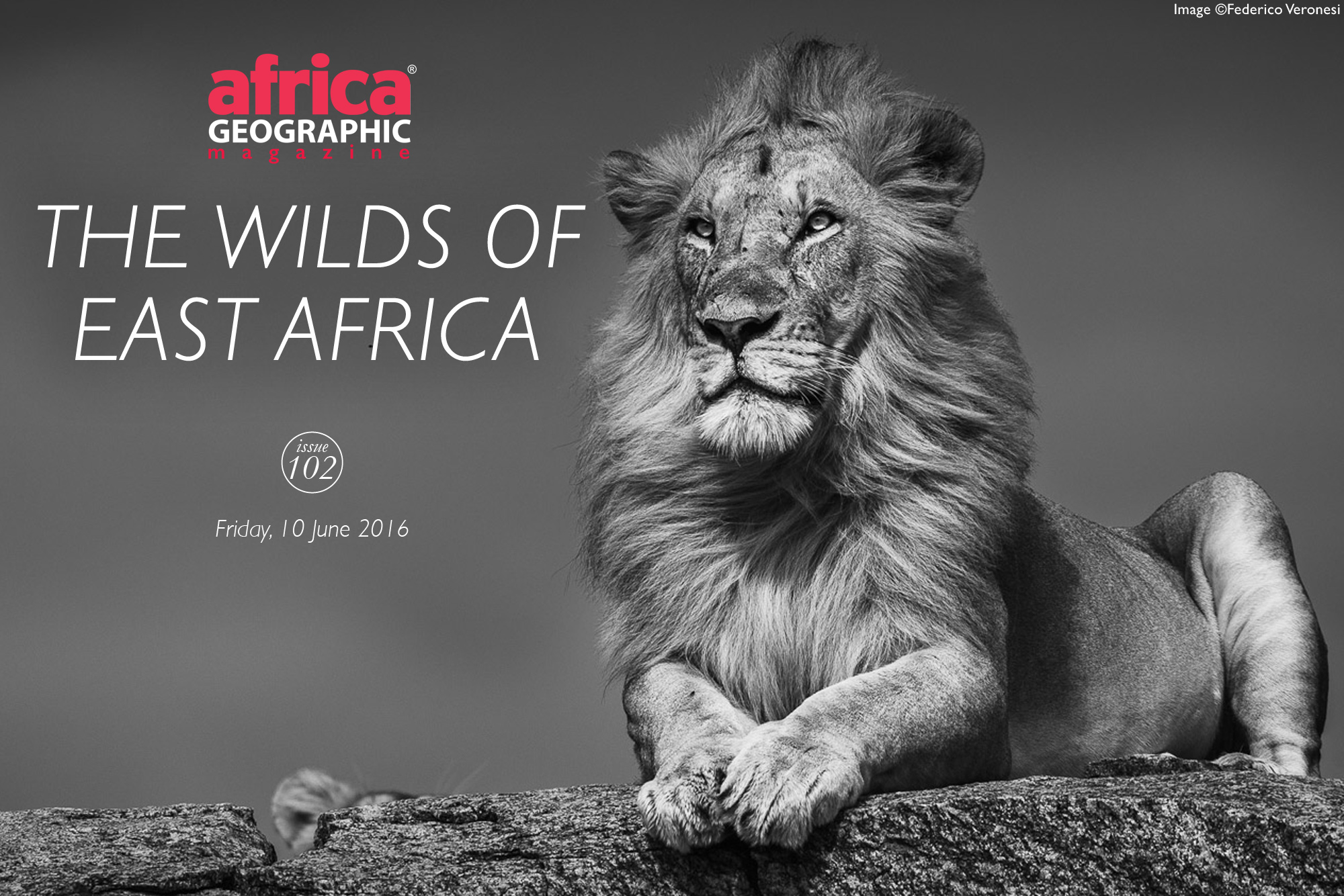
The Wilds of East Africa

The magic of Kenya and Tanzania is stronger than ever in this selection of evocative black-and-white photographs by Federico Veronesi.
In the cover photo above, a lion enjoys the warm rays of the sun that have finally broken through the clouds in the Serengeti National Park. This male and his two brothers have recently moved into this new territory where many females reside. They are young, healthy, and in their prime, so they will hopefully sire many cubs in the months ahead.

A caracal in the Maasai Mara National Reserve, Kenya © Federico Veronesi
While driving around a croton bush surrounded by the vast open plains of the Maasai Mara National Reserve, I frequently stopped to listen to the alarm calls from birds or dik-diks that might reveal a predator hidden in the bushes. For a long time, nothing happened, and the air was mostly silent. Then suddenly, a loud call from a slate-coloured shrike broke the silence. A few seconds later, it happened again.
I slowly drove closer, but I couldn’t see anything. I tried to pinpoint the bird’s location to localise the area, and eventually, I found it perched on top of a bush, looking down into the thicket. I turned the engine off and waited, binoculars in hand, trying to catch a rustle in the undergrowth. Then, finally, something started moving deep inside. Two brownish feline caracals – a mother and a fully grown cub – became visible. I looked harder and noticed a freshly killed impala fawn, and took this photo when the cub approached the carcass to start feeding.

Elephants on cracked soil in Amboseli National Park, Kenya © Federico Veronesi
I parked on the edge of the dry Amboseli lake early one morning as the sun struggled to shine through a layer of clouds. From a small elevation, I scanned the opposite side of the lake using a pair of binoculars. I saw wildebeests, zebras, gazelles, and a couple of giraffes walking across the landscape. And then I noticed some small dust devils rise in the far distance. Finally, huge dark shapes appeared through the hazy air. Elephants.
These gentle giants cross the lake frequently to reach the water points and the lush marshes in the heart of Amboseli National Park. A matriarch led her family on this long journey, which took them about one hour over hard, cracked soil. They followed ancient trails that their ancestors had used for thousands of years. Sometimes, they paused to smell other elephants’ droppings, to see who had passed by before them. I stopped far away and waited for them to come toward me. It was a magnificent and timeless scene.
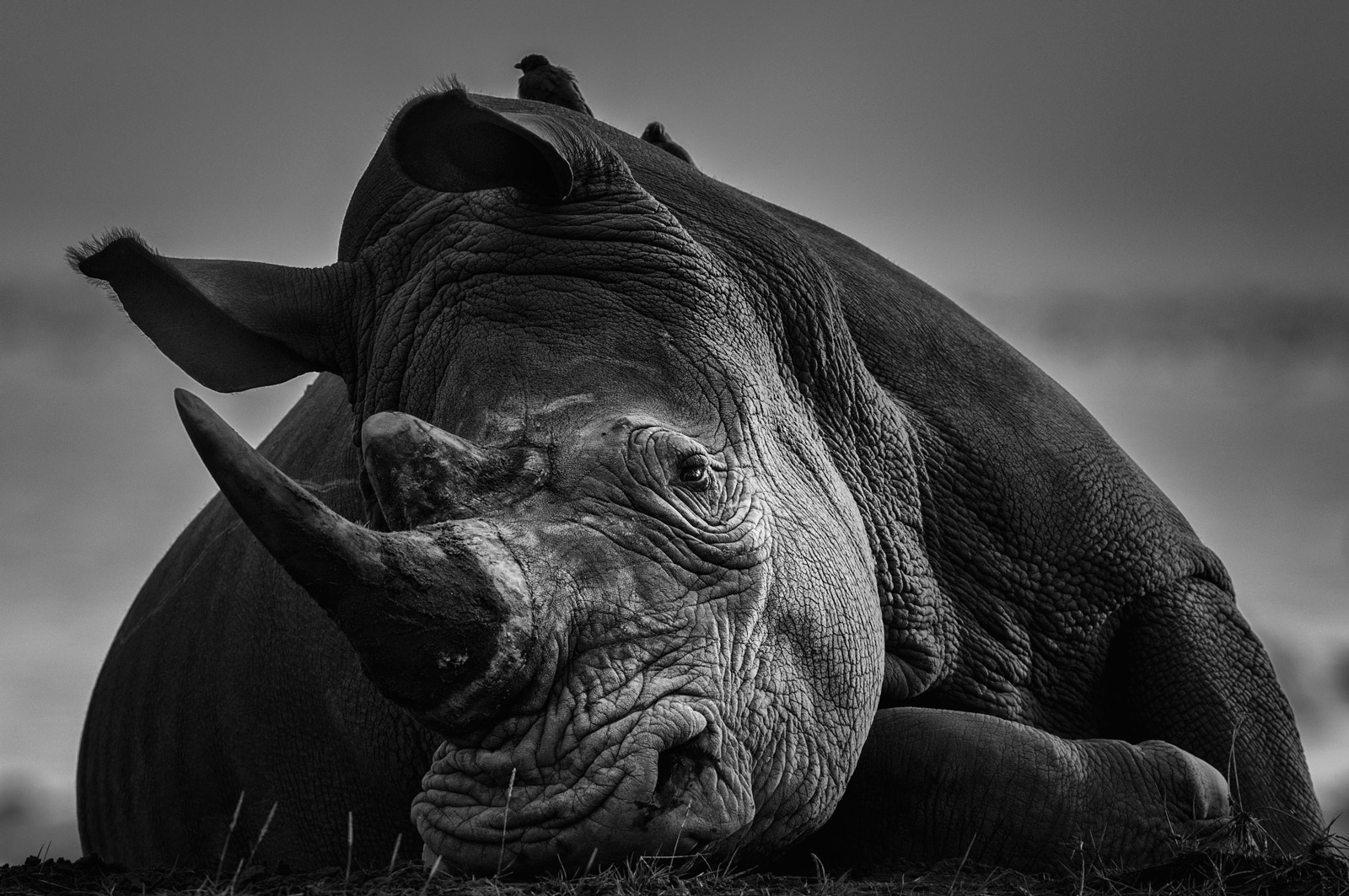
A resting white rhino in Lake Nakuru National Park, Kenya © Federico Veronesi
I encountered a small group of southern white rhinos on the grassy shores of Lake Nakuru one morning. The sun hadn’t yet cleared the hills in the east, and a soft mist was still hanging over the water. The incessant call of the flamingos was the only sound I could hear. Most of the rhinos were still resting, but one of them was awake. I waited for the sun to shine on its thick skin, highlighting the beautiful texture, before taking this photo.
Although they aren’t originally from East Africa, southern white rhinos have reproduced successfully in Lake Nakuru National Park after having been transferred there from South Africa in the 1990s. They have bred so well that many have been translocated to other parks and conservancies in Kenya over the years.
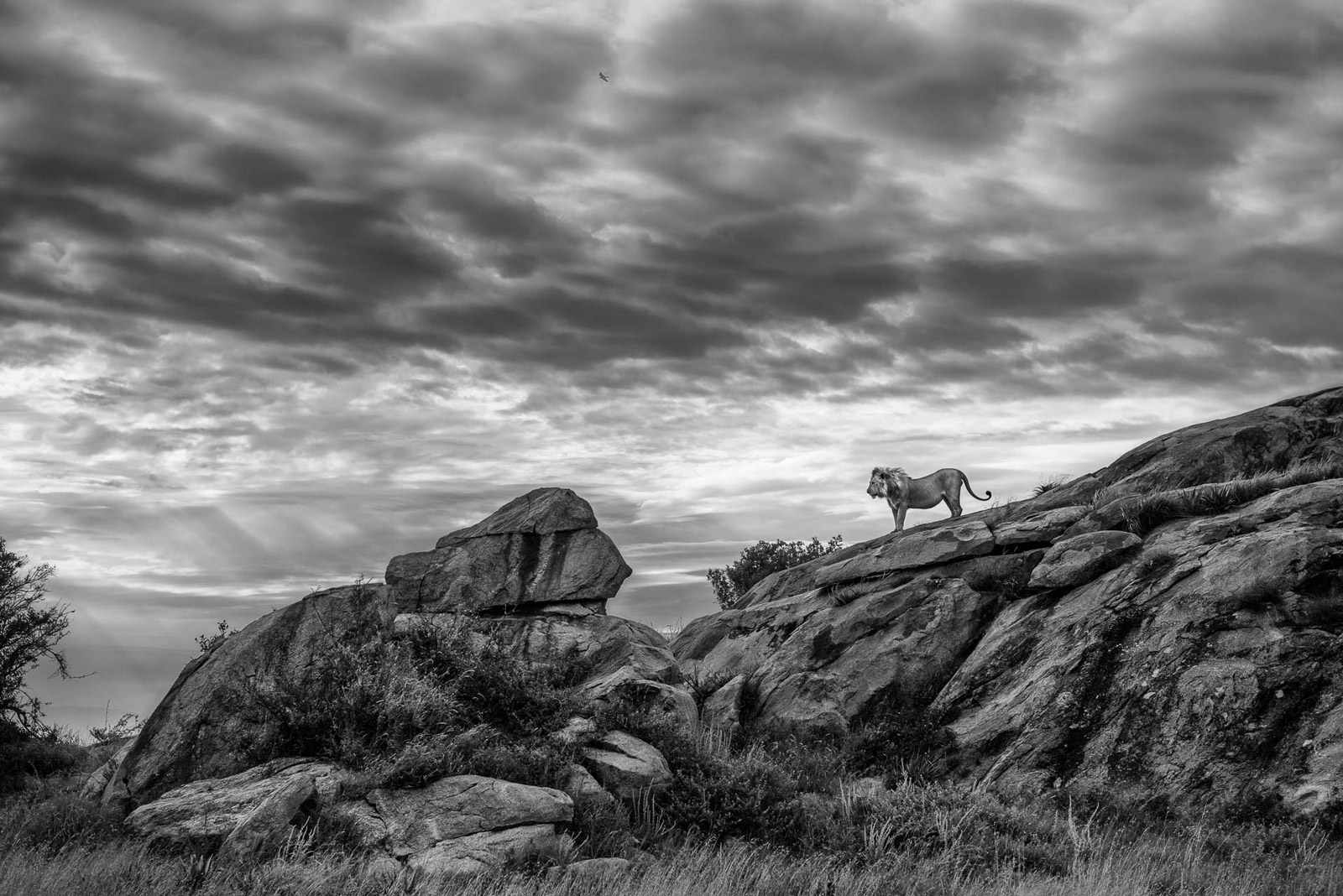
A lion on a rocky outcrop in the Serengeti National Park, Tanzania © Federico Veronesi
Huge rocky outcrops rise in the middle of the endless plains of the Serengeti National Park. These are called kopjes, and they are an excellent home for the many lion prides that inhabit these lands.
Early one morning, four lionesses and three males were actively following each other up and down the rocks after it had rained almost incessantly the previous day. While the morning sun struggled to shine through the lingering clouds, this male lion paused on his way down to survey his kingdom.

Buffalo horn and eye in the Maasai Mara National Reserve, Kenya © Federico Veronesi
The sun appeared below the clouds before sinking behind the horizon in the Maasai Mara one late afternoon. The light in Africa on the equator is only good for a very short time after sunrise or before sunset, and in these moments, I hate being caught out on the plains without a subject. In these moments, the light becomes such a beautiful and dramatic element that it can make the portrait of any animal fascinating.
On this particular day, two beautiful buffalo bulls were sitting in the middle of the plains. I approached them slowly to allow them to become habituated to me, as I wanted to get quite close to them to frame what I felt were their most impressive features – their horns and eyes. I wanted the light coming from behind them to emphasise the texture of the horns and to reflect on the pupil. And my vision came together in this image.
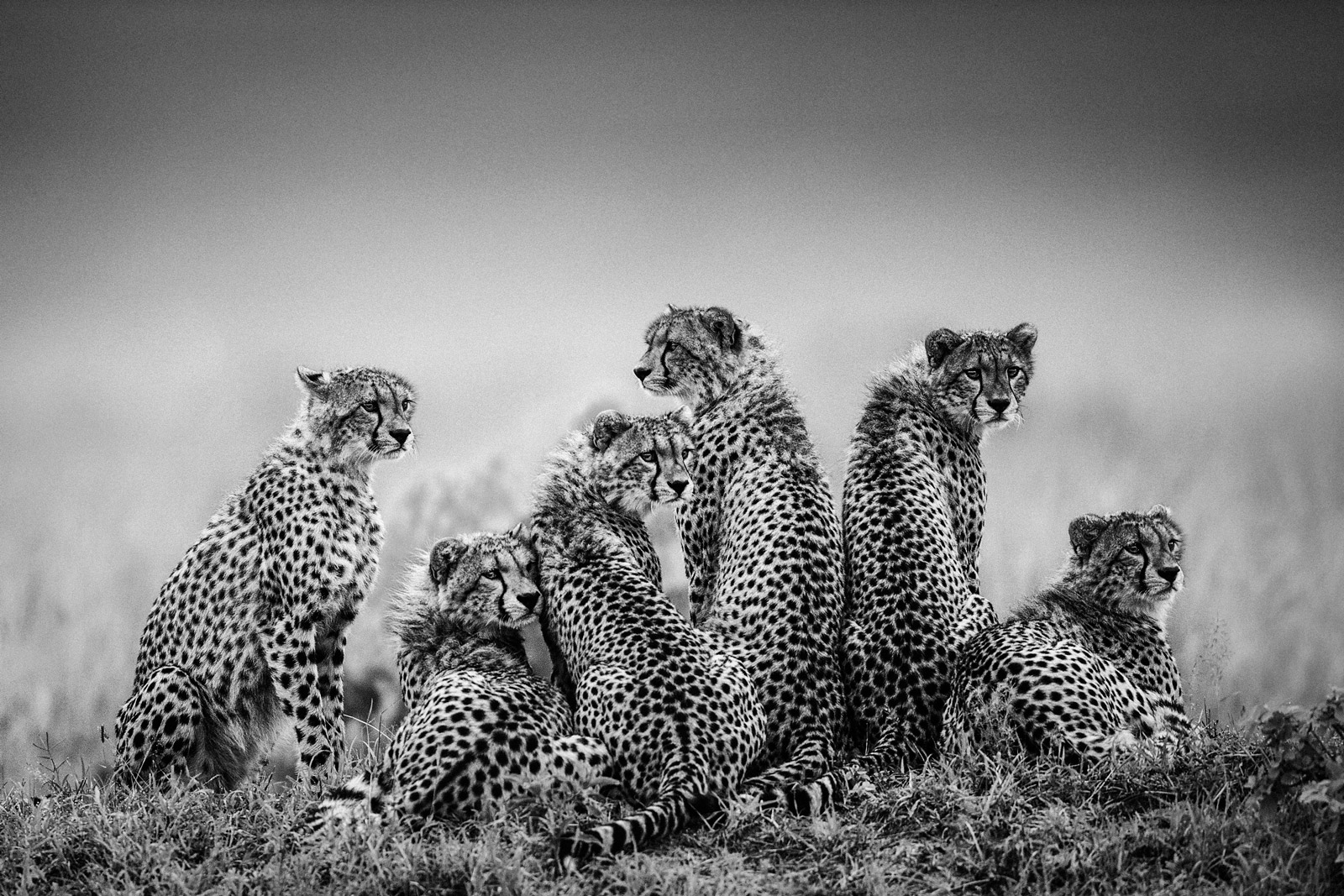
Six young cheetahs in the Maasai Mara National Reserve, Kenya © Federico Veronesi
It was a cold and gloomy day in a remote area of the Mara. Just as I was about to reach the bottom of a valley, I noticed a cheetah to my left – it was a female, and she was stalking an impala just ahead of her. As she crept forward, I realised that there was another cheetah behind her – and another one. There were six adolescent cubs in total, which were all almost as big as their mother but still had fur on the back of their necks.
I parked and watched the mother cheetah explode in a fantastic chase. As soon as the impala was on the ground, the young cheetahs boldly ran across the gulley to reunite with their wonderful mother. She has kept all of them safe and healthy for 14 months in the heart of lion country, which is quite an extraordinary achievement.
These cubs are now ready to fend for themselves, and their mother probably needs some rest. As the young cheetahs voraciously feed, she sneaks out of their sight, and then she is gone. After feeding, they look around, wondering where their mother is, anxiously awaiting her return, which will never occur. From now on, they’ll be on their own.
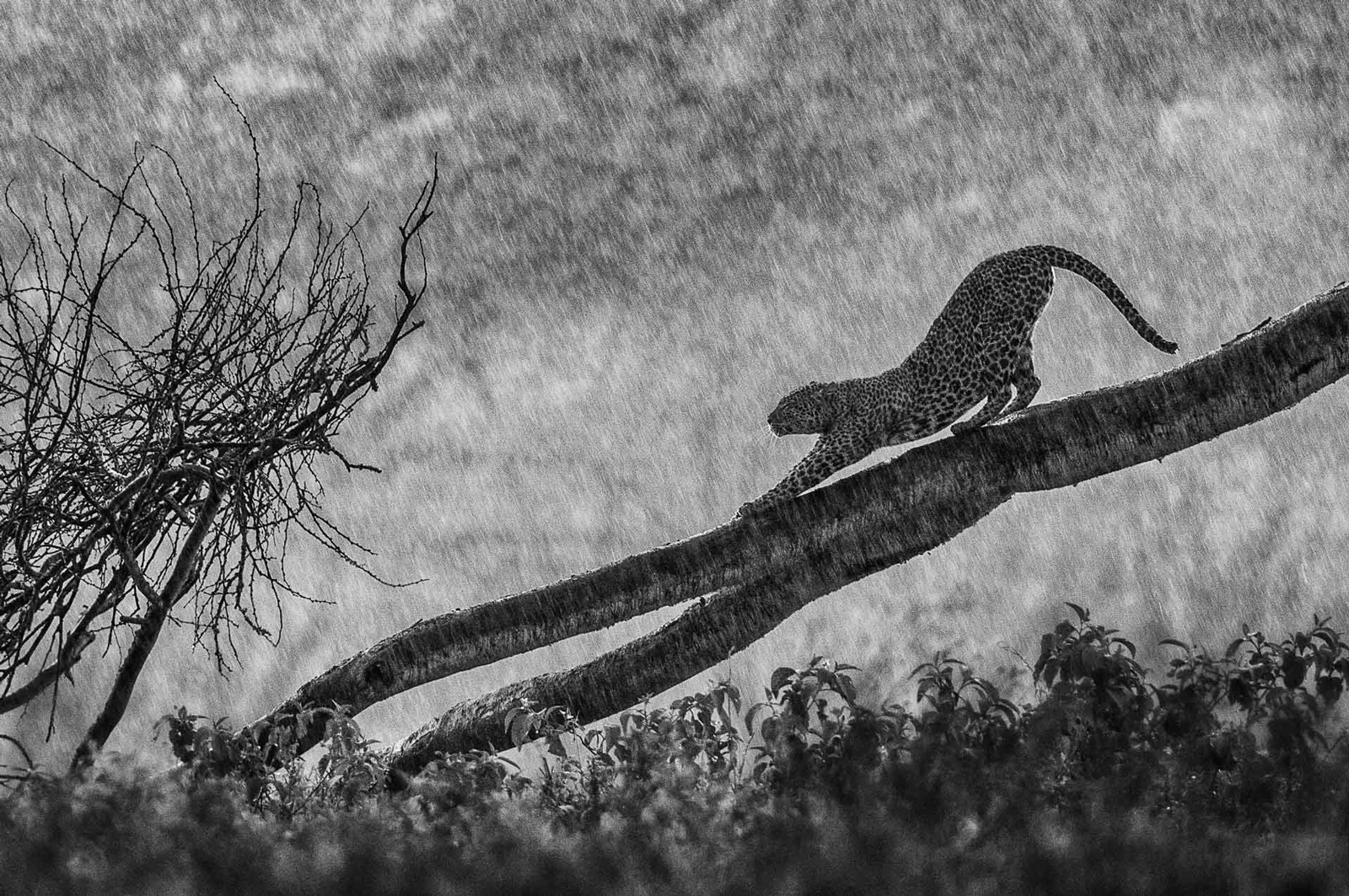
A leopard in the rain in Lake Nakuru National Park, Kenya ©Federico Veronesi
On a cloudy afternoon in August, I was driving on a slippery track along the edge of a forest in Lake Nakuru National Park. Soon, it started pouring, and I knew I had to pay attention to the track not to get stuck for the umpteenth time. However, I also tried still to keep an eye on every branch and every bush until, finally, I spotted the unmistakable shape of a feline on a fallen log.
It was a leopard in the pouring rain, a huge female that I have seen many times and has two fully grown daughters who are also often seen in the area. The rains probably woke her up from her afternoon rest, and she stretched and licked the water off her fur. Then suddenly, a five-month-old cub, which I had never seen before, climbed on the log. She licked it for a while before the cub descended to play on a dry bush at the tree’s base. Soon, she jumped down, too, and together, they disappeared into the forest’s depths.

A portrait of Tim in Amboseli National Park, Kenya © Federico Veronesi
During the wet season, big herds of elephants gather around the swamps of Amboseli to feed on the fresh green grass. As food is abundant and especially nutritious during this period, this is also the peak time for socialisation.
The youngsters and calves are energetic, often engaging in games and play-fights. Many females also come in estrus around this time, attracting males from the entire ecosystem. Fights frequently erupt between males who are not willing to acknowledge submission. However, none of these males will dare to challenge the famous big tusker, Tim – Amboseli’s biggest and most dominant male.
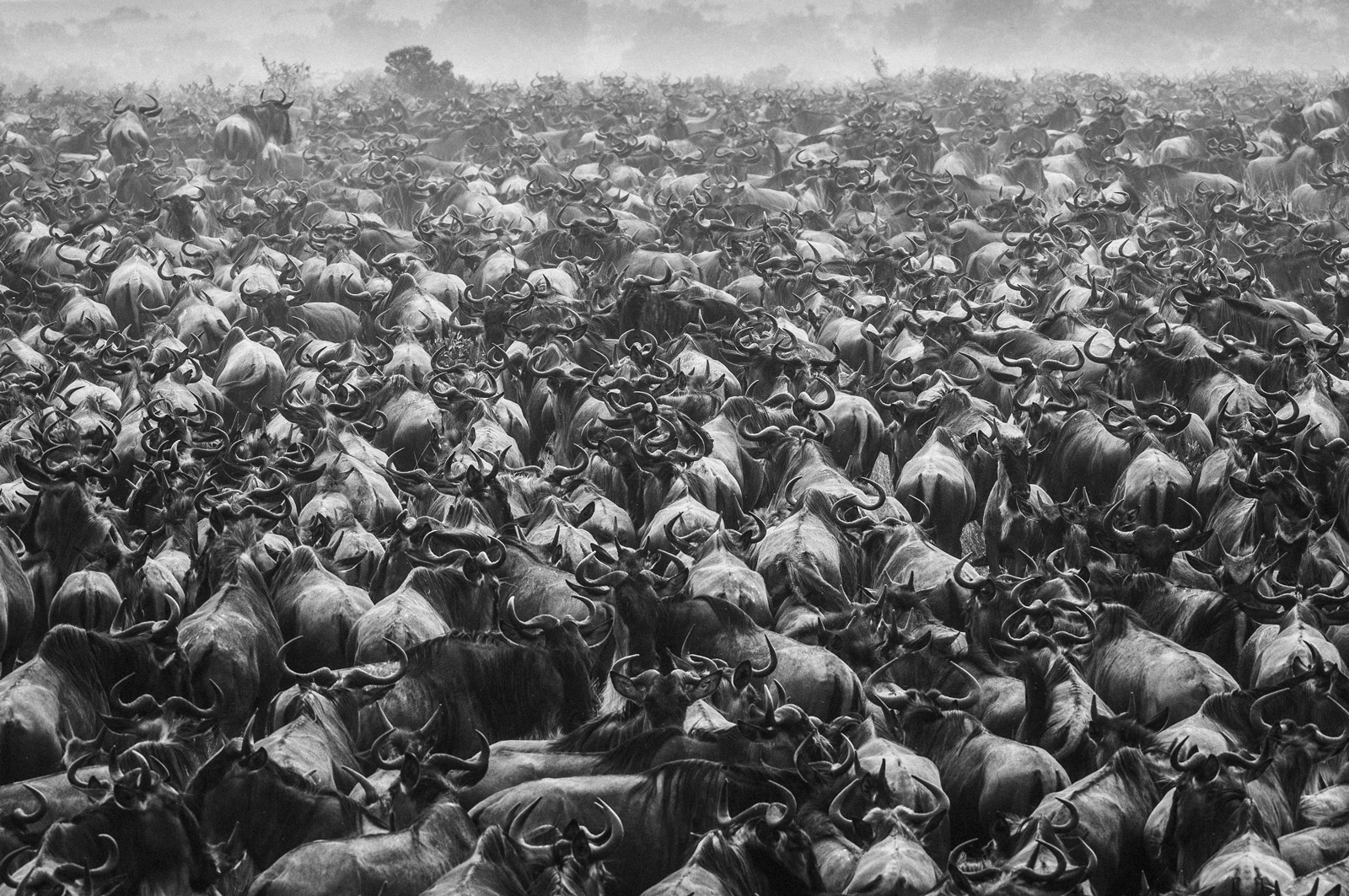
Wildebeests in the Maasai Mara National Reserve, Kenya ©Federico Veronesi
One early morning, I spotted a huge herd of wildebeest heading towards the opposite bank of the Talek River in the Maasai Mara National Reserve, and their intention to cross over was clear.
As the sun struggled to shine through a layer of clouds, the animals descended the banks with little hesitation. The water was very shallow, so there wasn’t a massive danger in terms of crocodiles lying in wait or fast-flowing rapids, but the banks were very steep and slippery. Lions and leopards also often ambush the animals in these situations, taking advantage of the channels dug by hippos.
However, on this particular day, the crossing went smoothly. The animals ran across the river in their thousands, but when I turned around, I realised that those that had successfully crossed the river had grouped just above the banks instead of dispersing across the plains. The first animals to cross over had stopped and looked intently in one direction. I looked through my binoculars and saw a lone male cheetah ambling by, not actively hunting but still posing a great enough threat to halt the natural flow of the migration.
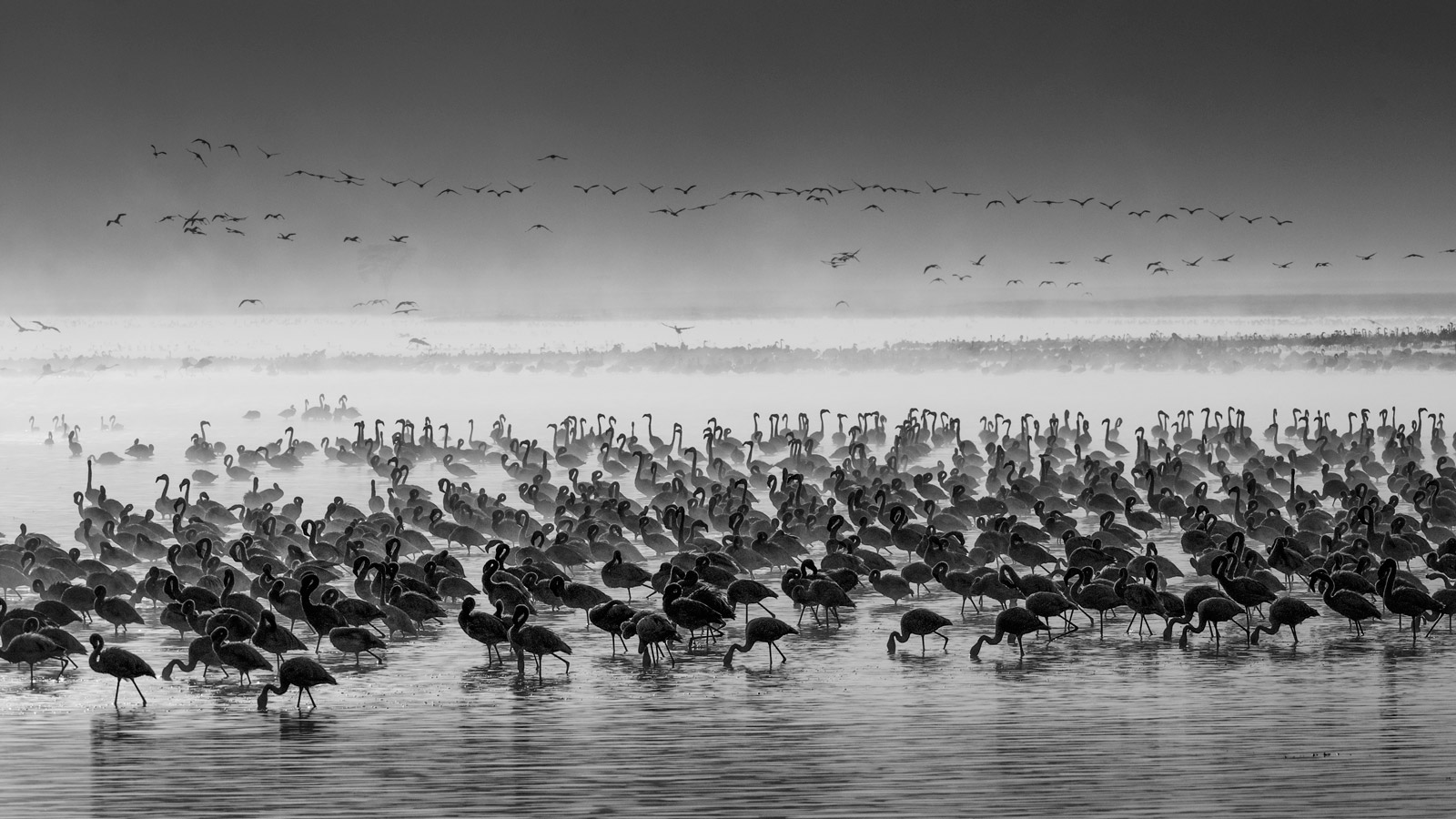
Flamingos in the mist – Lake Nakuru, Kenya ©Federico Veronesi
The air was chilly on the morning that I took this photo, and I headed towards Lake Nakuru to be there way before the sun rose. When I reached my spot on the lakeshore, the barely lit mist lingered on the water, enveloping a colony of lesser flamingos.
I watched as the light intensified in the east and on the lake, silhouetting the flamingos against this ethereal layer of a shroud. On the far shore, some flamingos abruptly took off, while the ones near me noticed the alarm calls and looked up. A spotted hyena was hunting along the shore, causing panic among the birds.
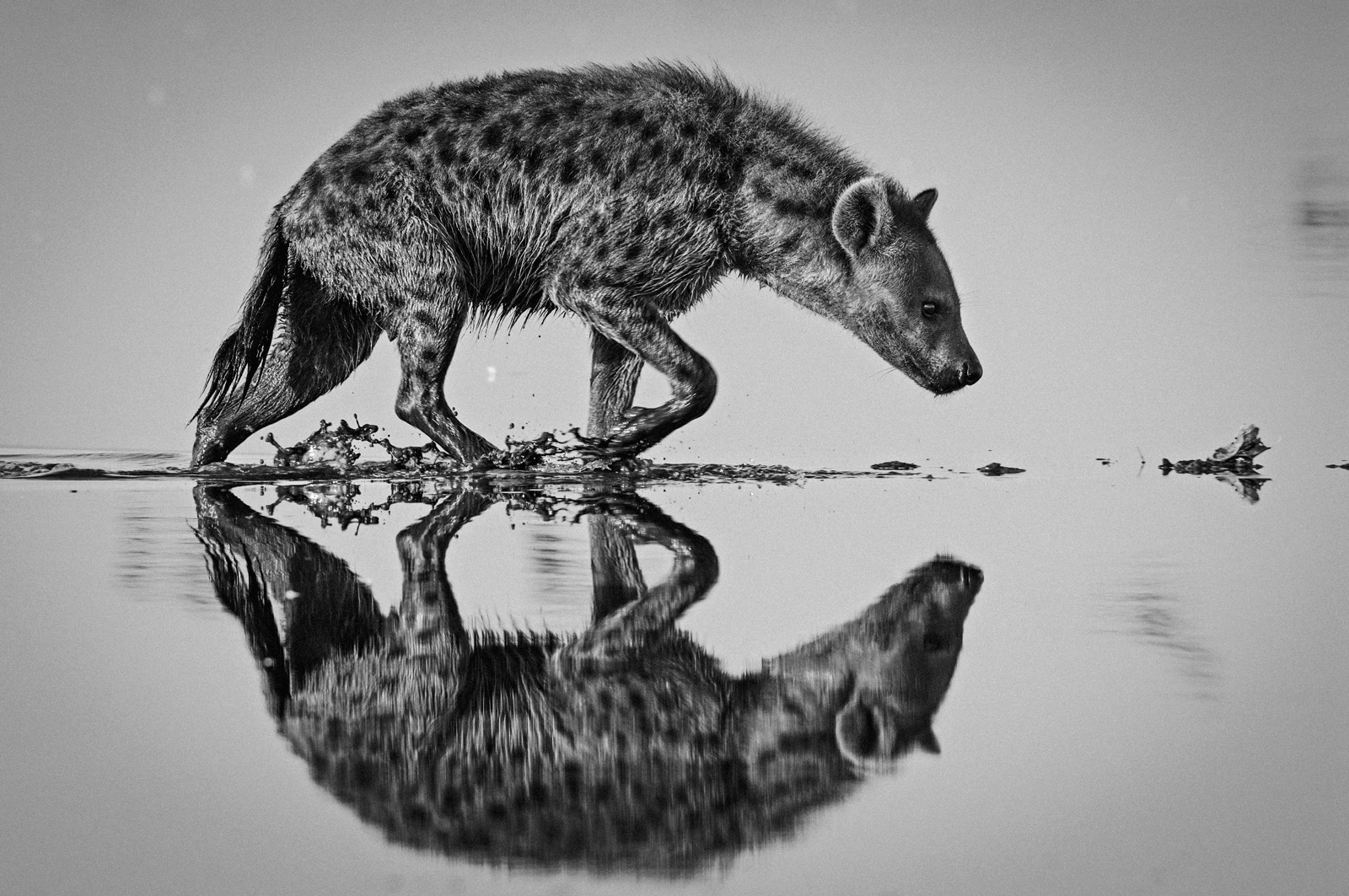
A hyena reflection in Lake Nakuru, Kenya © Federico Veronesi
On the shores of Lake Nakuru, a daily ritual occurs at around sunrise. As the flocks of lesser flamingos feed peacefully in the shallow waters, a couple of spotted hyenas cross the plains and quickly approach the sandy shore.
The nearby birds look up at them warily. As the first hyena enters the water at a steady pace, the flamingos start walking away in unison. The hyena then sprints toward them at full speed, and its endurance is impressive, but all the flamingos are quick enough to take off before the hyena reaches any of them.
The sky turns pink as the flamingos fly along the lake’s edge to another shore. The hyena stops and looks at the now-empty section of the surrounding lake. Unabated, it heads back to the shallow waters and walks towards other flamingos instead. Though it seems like an almost impossible task, this carnivore will try three times again before retreating to the forest to rest as the day gets warm.

A lion love story in the Maasai Mara National Reserve, Kenya © Federico Veronesi
It was early morning in the Mara after a night of heavy rain. I ventured out onto the plains, my tyres slipping on the wet track, intending to cross the river once I reached it. However, I found it to be full of raging water as a result of a flash flood. My plans for the morning quickly changed, and I decided to stay on the same side of the river as I was already on.
After a short while, I was thrilled to find a couple of amorous lions lying in the wet grass. Flies buzzed around them in droves, and they mated approximately every 15 minutes. This continued for a period of five to seven days.
I am always fascinated by the explosion of violence that marks the end of each bout of intercourse, with both male and female growling at each other with bared teeth. Peace is restored immediately after this, and the female generally turns on her back to ease ovulation while the male looks around before lying down again.
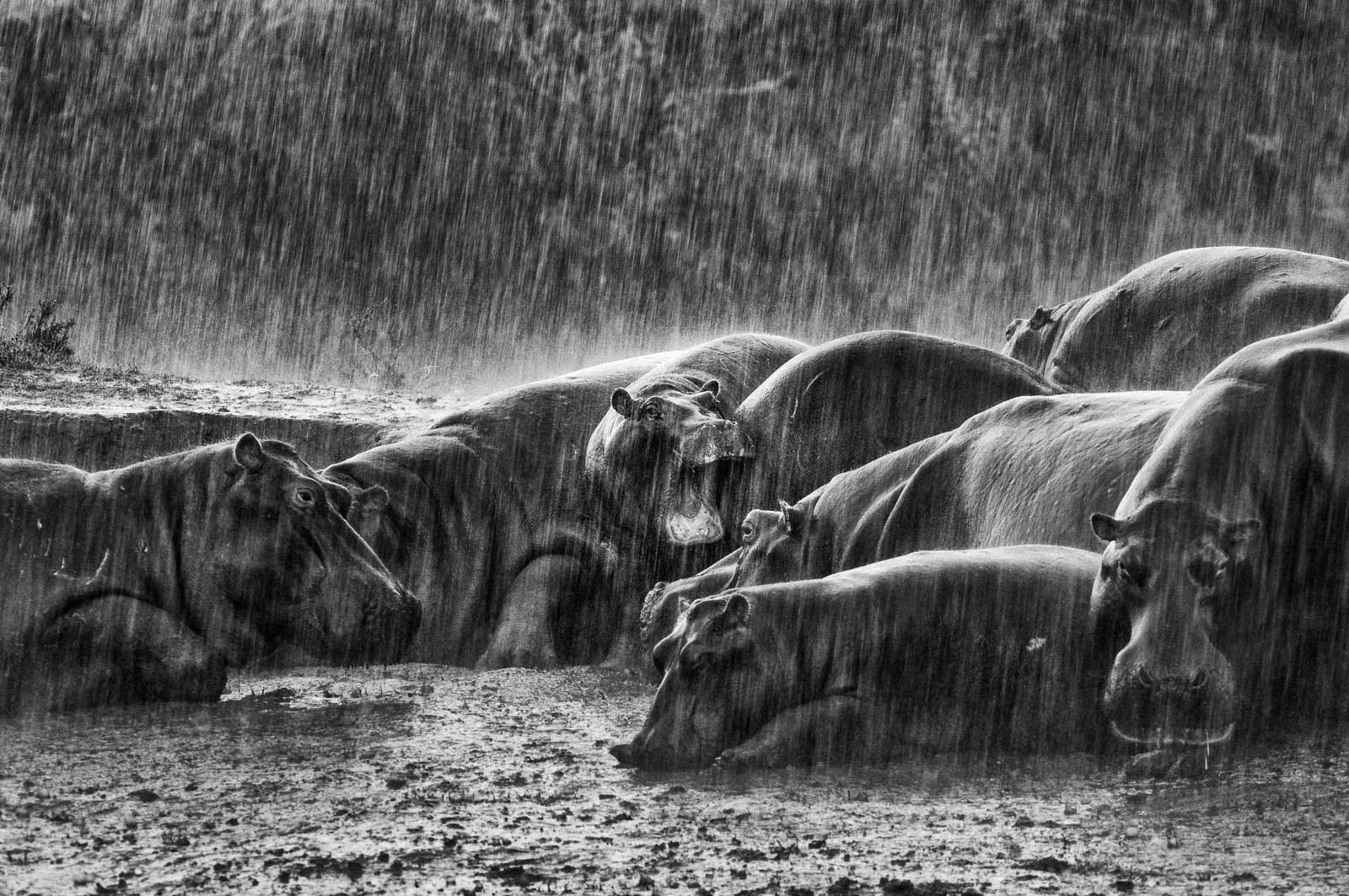
Hippos in the rain in the Maasai Mara National Reserve © Federico Veronesi
I was driving along the Mara River with a dark sky hanging over my head and a cold wind blowing from the northeast. When it neared midday, the clouds broke into heavy rain, and the storm caught a pod of basking hippos by surprise. Initially, they didn’t move but as the rain increased, they got up individually and returned to the water.
Their enormous, shiny backs formed an interesting composition as they were all hit by the rain next to each other. I opened the window just enough to sneak the lens out and take some images, but in the space of just a few seconds, both the camera and I were completely soaked.
 Find out about our ready-made safaris – or ask us to build one just for you.
Find out about our ready-made safaris – or ask us to build one just for you.
About the author
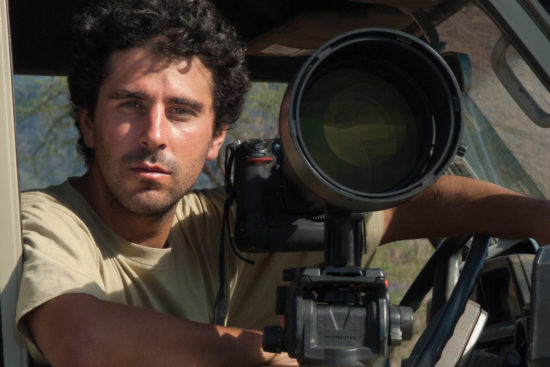 Born in Italy in 1975, Federico Veronesi is a wildlife photographer who has been fascinated by large African mammals since childhood.
Born in Italy in 1975, Federico Veronesi is a wildlife photographer who has been fascinated by large African mammals since childhood.
In 2002, he moved to Kenya to follow his dream of living full-time amongst them. Since then, he has spent most of his days in the wilderness of East Africa, photographing the wildlife day after day, following their lives, and watching their stories unfold against the majestic backdrop of the African savannah.
Federico’s work spans from black and white to colour. He always looks to blend light, emotion, contrast, scenery and atmosphere into evocative images. His coveted prints are now sold worldwide, and the BBC regularly uses his images in their books to accompany their much-loved nature documentaries.
In his first book, Light and Dust, which was published in 2015, Federico reveals animals’ most intimate behaviour and emotions, and their resilience and beauty, as well as the wilderness that they live in. To do so, he sought the most dramatic weather conditions – morning mists, dust storms, heavy rains or rays of light shining through the clouds – and followed the animals on endless journeys along ancient trails, across dry lakes and raging rivers, and watched them fight for survival with undying strength and determination.
Federico is also a professional guide certified by the Kenya Professional Guides Association. He organises and leads photographic safaris in East Africa and other African countries.
To comment on this story: Login (or sign up) to our app here - it's a troll-free safe place 🙂.![]()




